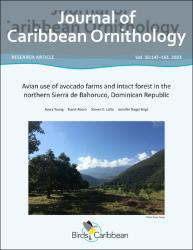Mostrar el registro sencillo del ítem
Avian use of avocado farms and intact forest in the northern Sierra de Bahoruco, Dominican Republic
| Licencia | Open Access article distributed under the Creative Commons Attribution License, which permits unrestricted use, distribution, and reproduction, provided the original work is properly cited. | es |
| Autor | Young, Avery | |
| Autor | Aborn, David | |
| Autor | Latta, Steven C. | |
| Autor | Nagel Boyd, Jennifer | |
| Fecha de admisión | 2025-05-13T23:44:04Z | |
| Fecha disponible | 2025-05-13T23:44:04Z | |
| Año | 2023 | |
| Citación | Young, A., Aborn, D., Latta, S. C., & Boyd, J. N. (2023). Avian use of avocado farms and intact forest in the northern Sierra de Bahoruco, Dominican Republic. Journal of Caribbean Ornithology, 36, 147-161. Recuperado de: | es |
| URI | https://bvearmb.do/handle/123456789/6217 | |
| Sinopsis | Abstract: The Dominican Republic is experiencing increased forest loss due to the expansion of avocado farming. While agricultural lands can provide viable habitat for birds, knowledge of avian use of avocado farms relative to native forest is limited. We conducted surveys in fall 2021 to compare the bird communities and vegetation complexity of two avocado farm sites and two native dry forest sites in the northern Sierra de Bahoruco region of the Dominican Republic to assess avian habitat use. Overall, we found that habitat associations differed for bird species distinguished by contrasting geographic ranges. In particular, the abundance, richness, and diversity of bird species endemic to Hispaniola were significantly greater in forests than in farms, while non-endemic resident bird species had the opposite habitat associations. | es |
| Sinopsis | Resumen: La República Dominicana está experimentando una mayor pérdida de bosques nativos como consecuencia de la expansión de los cultivos de aguacate. Aunque las tierras agrícolas pueden proporcionar un hábitat propicio para algunas aves, el conocimiento sobre el uso que hacen de los cultivos de aguacate en comparación con las áreas forestales nativas es limitado. En otoño de 2021, realizamos muestreos en dos granjas de aguacate y dos bosques secos nativos en la región norte de la Sierra de Bahoruco (República Dominicana), y comparamos las comunidades de aves y la complejidad de la vegetación para evaluar el uso del hábitat que hacen las aves. En general, observamos diferencias entre las asociaciones de hábitats de las especies de aves con distribuciones geográficas distintas. | es |
| Idioma | English | es |
| Publicado | Journal of Caribbean Ornithology, 36, 147-161 | es |
| Derechos | © 2023 Young et al.; licensee BirdsCaribbean. | es |
| URI de derechos | http://creativecommons.org/licenses/by/3.0/ | es |
| Materia | Recursos naturales - República Dominicana | es |
| Materia | Recursos forestales | es |
| Materia | Biodiversidad - República Dominicana | es |
| Materia | Aves ─ República Dominicana | es |
| Materia | Hábitats y especies | es |
| Título | Avian use of avocado farms and intact forest in the northern Sierra de Bahoruco, Dominican Republic | es |
| dc.title.alternative | Uso de granjas de cultivo de aguacate y bosques nativos por parte de las aves en el norte de la Sierra de Bahoruco, República Dominicana | es |
| dc.identifier.doi | https://doi.org/10.55431/jco.2023.36.147-161 | |
| URL | https://jco.birdscaribbean.org/index.php/jco/article/view/1389/1039 | |
| Tipo de material | Article | es |
| Tipo de contenido | Scientific research | es |
| Acceso | Open | es |
| Audiencia | Technicians, professionals and scientists | es |
Ficheros en el ítem
Este ítem aparece en la(s) siguiente(s) colección(es)
-
Investigación ambiental [1725]
La consulta y descarga de este documento están sujetas a esta licencia: Open Access article distributed under the Creative Commons Attribution License, which permits unrestricted use, distribution, and reproduction, provided the original work is properly cited.
© 2023 Young et al.; licensee BirdsCaribbean.
© 2023 Young et al.; licensee BirdsCaribbean.


